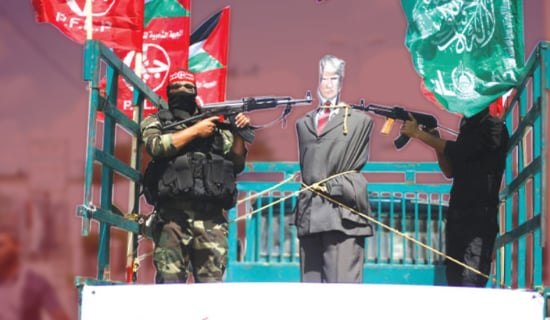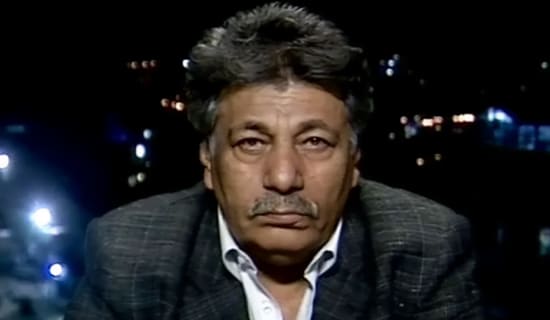
A report in a leading Indian newspaper accuses India's Ministry of Home Affairs (MHA) of faking the country's counter-terrorism security preparedness in the years following "26/11," the November 26, 2008 terror attacks in Mumbai, the country's financial capital.
Written by renowned investigative journalist Praveen Swami, the report, titled "The Indian Art of Faking Security,'' was published in The Hindu, a leading Indian daily. The report compared annual security review reports published by the MHA, noting that the ministry has been failing in its claims of counterterrorism efforts and that the annual review reports present claims of previous year's reports as achievements.
The report accused Indian Home Minister P. Chidambaram of "being economical with the truth" over his assurance to the residents of Mumbai following the July 13, 2011 multiple bombings in the city that police in India are now better trained and equipped to handle terror attacks. The MHA, along with the state governments, is the sole federal agency responsible for policing in India.
Citing the security preparedness in Maharashtra, of which Mumbai is the capital, the report pointed out gaps in recruitment and training of essential personnel, stating: "Less than two-thirds of the ATS [Anti-Terrorism Squad] personnel… are on active duty, though, because corruption-related concerns stalled the recruitment of mid-level officers for several years."
Following are excerpts from the report:[1]
Outdated Claims in Annual Security Review Reports
"Enormous deficits of resources and capacities like these characterize almost every police force in the country: the much-hyped, multimillion police reform program initiated after 26/11, it is becoming clear, painted stripes on a doddering donkey and passed it off as a tiger.
"Post-26/11 security reforms are painstakingly documented in the reports released by the MHA [Ministry of Home Affairs] each year. The latest report, for 2010-2011, is 307 pages long – up from the 216 put together in 2009-2010, Mr. Chidambaram's first full year in charge of the gargantuan task of dragging India's security and intelligence infrastructure out of the Mughal era.
"The healthy increase in the volume of text might give reason to believe a great deal is being done – but a close reading suggests that this conclusion would be wrong.
"Last year, the MHA focussed on improving coastal security. The 2009-2010 report said it had 'been decided to formulate Phase-II of the Coastal Security Scheme keeping in view the additional requirements of coastal police stations, interceptor boats and other infrastructure. In this regard, the coastal States/UTs [federally administered Union Terrorist] have carried out vulnerability/gap analysis in consultation with Coast Guard.'
"Here's what the MHA says it did in 2010-2011: '… decided to formulate Phase-II of the Coastal Security Scheme keeping in view the additional requirements of coastal police stations, interceptor boats and other infrastructure.' 'In this regard,' it continues happily, 'the coastal States/UTs have carried out vulnerability/gap analysis in consultation with Coast Guard' – a verbatim repeat of the previous year text.
"This isn't the only evidence of the formidable skills of the MHA's mandarins in the fine art of faking security.
"The MHA announced in 2010 that it had set up regional hubs of the 'National Security Guards with a total strength of 1,086 personnel, i.e. 241 personnel for each hub and 122 personnel for administrative support, have been set up by the Government at Chennai, Hyderabad, Kolkata and Mumbai.'
"In 2010-2011, exactly the same thing was advertised as a new achievement, in exactly the same language – though it has, thankfully, been moved down from page 96 to 146.
"The actual record of implementation has been patchy. Both the 2010 and 2011 reports record, for example, instructions to fit transponders on India's merchant fleet – a kind of electronic device that would allow coastal authorities to track the whereabouts of the fleet in real time. The Director-General of Shipping at the Department of Shipping, both reports state, 'issued two circulars to ensure that all types of vessels including fishing vessels' carried the cheap, easily-available devices.
"Neither report, though, tells us how many have actually been fitted: the number, a senior government source wryly said, 'is less than one.'
Recruitment of Security Personnel Stalled Due to Corruption
"Maharashtra's case is instructive, because it is here that the post-26/11 reforms were born – and ought to have been most acutely felt. The ATS [Anti-Terrorism Squad] has a sanctioned staff strength of 726 serving a population estimated at 112,372,972 – a figure that sounds impressive, if contrasted with the double-digit figures on duty on the night of 26/11.
"It is less impressive, though, when placed against the over 1,500 staff strength the London metropolitan police's counter-terrorism division provides to a region with just 7.8 million residents. Less than two-thirds of the ATS personnel, moreover, are on active duty, though, because corruption-related concerns stalled the recruitment of mid-level officers for several years.
"Elsewhere in the force, too, the picture is much the same. In 2009, the Mumbai Police purchased Colt M4 5.56-millimetre carbines, the Brügger & Thomet sub-compact MP9 for close-protection duties, the Smith & Wesson Military and Police 9-millimetre pistol as a personal side-arm and the M107 50-calibre Special Application Rifle. The weapons were purchased without conducting studies of the force's actual needs or evaluating competing equipment.
"The force also chose not to invest in a specialized firing range where its personnel could conduct tactical training with these weapons – meaning their use in a crisis will do more harm than good.
"Force One, the special weapons and tactics emergency response force set up after 26/11, is still short of bulletproof jackets, night-vision equipment, secure communications kits and blast-proof eyewear – and even a training base, since the land it was promised has become mired in disputes. It is even short of about a third of its complement of 70 officers, a deficit disastrous in combat.
"Earlier this month, journalist Nitin Yashwantrao broke news that seven boats purchased to protect… [Mumbai's] coastline were docked at a makeshift jetty, manned by untrained crews, and could run for a maximum of half-hour a day, because of restrictions on fuel purchases…"
Lack of Training and Equipping India's Police Forces
"Key elements of India's broader police modernization effort have fared even worse. Back in 2008, the Union government decided to set up a crime and criminal tracking network system, the CCTNS, which would allow police stations and organizations to share information from the bottom up.
"In the wake of 26/11, the [federal Indian] Cabinet decided to commit Rs. 2000 crore [1 crore = 100 million] to the project, which is scheduled for completion in 2012. But Wipro is still designing software, and 10 States are yet to hire consultants for installing hardware. No one knows for certain just when the first networked computer will actually be installed in a police station.
"The National Counter-Terrorism Centre Mr. Chidambaram promised to have up and running in 2010 to design and implement the security strategy, is stalled because of bureaucratic resistance.
"So is NATGRID, a system which would allow investigators and intelligence services to monitor 21 sets of already existing government databases. Mr. Chidambaram said, in December 2009, that the project would be complete in two years or less – but the Cabinet accorded in-principle approval only last month.
"It doesn't take a genius to see what's gone wrong. India's police reform program has been reasonably successful in creating physical assets and hiring personnel. For example, 71 of the 73 promised coastal police stations have been built. Hundreds of thousands of police personnel have been hired: last year, the MHA claimed that India now had 162 personnel for every 100,000 population, up from 128:1,00,000 in 2008, edging slowly towards the international norm of 250:1,00,000.
"But India has been less successful in making these acquisitions meaningful: in giving the police the kinds of investigation, intelligence and operation skills that make assets and tools meaningful.
"Few of the thousands of police personnel drafted in New Delhi to guard its public infrastructure and installations, experts who visited them during the Commonwealth Games pointed out, even appeared to know the correct posture for holding automatic weapons…"
[1] www.thehindu.com (India), July 21, 2011. The text of the report has been lightly edited for clarity.




